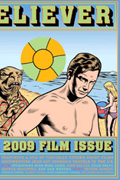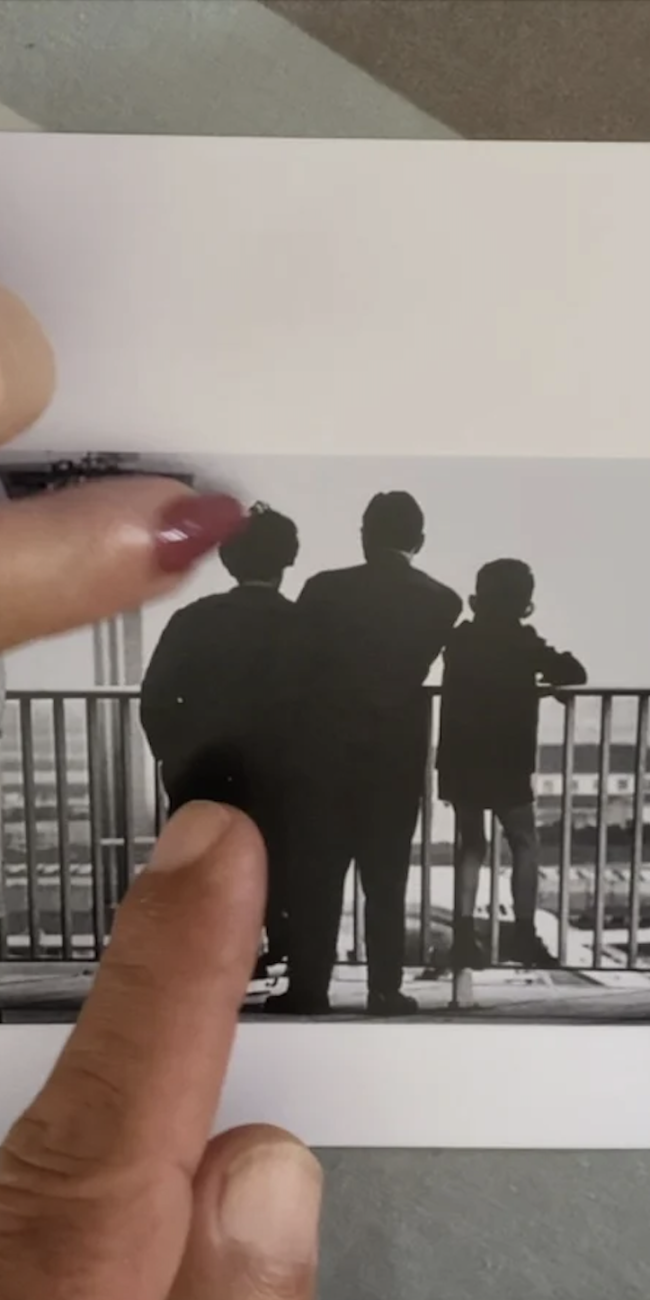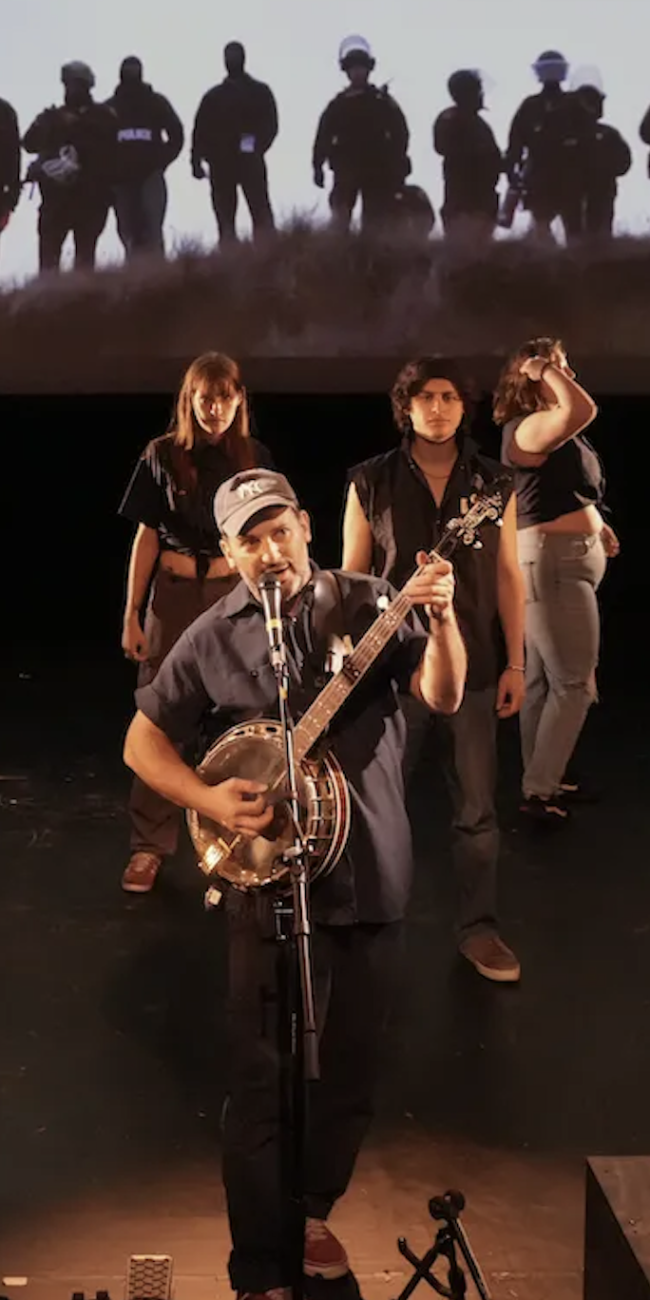JLG IN USA (THE BELIEVER’S 2009 FILM ISSUE DVD)

(The Believer’s 2009 Film Issue is on newsstands now. Visit The Believer’s official website to subscribe to the magazine and secure a copy of the JLG in USA DVD.)
No matter how many times I gleefully subject my unsuspecting roommate or visitor to my dubbed VHS copy of Jean-Luc Godard’s nearly unwatchable 1975 film Numero Deux (thank you, University of Cincinnati library), I can never get anyone to like it. It’s not so much the barely discernible narrative, filmed off a TV, involving a woman whose bowels are backed up after being fucked in the ass by her husband, that bothers them. Nor is it the fact that all of this—on top of the the myriad textural and aural disruptions, the opening 10-minute monologue delivered by the director about what to do with all these machines—is supposed to be some grand metaphor that speaks to the horrors of late market capitalism. What just about every person I’ve ever shown this movie to dislikes about it is that it’s boring. And who am I, regardless of what critical acumen I do or do not possess, to argue with that?
At one point in my evolution as a film viewer, I really thought Jean-Luc Godard could do no wrong. He was, in the brand that has been erected around his name in my particular corner of film academia, the ultimate cineaste, firebrand critic turned esoteric but wildly appealing Gallic auteur of the heady 1960s. Someone who had a once in a generation combination of provocative ideological insights, a keen rhetorical understanding of the medium’s dominant techniques and a great skill for revealing and subverting those mechanics in ways that seemed alive, sophisticated and fun.
He was for me, in my deluded and naïve thinking at the time, some super sentient being, extra human, with vision and a sense of time and color and sound and life that made a mockery of just about any other filmmaker who had ever thought of putting something in front of a motion picture camera. In the year 2004, the year of color coded terror alerts on the TV and of thinking any day in New York might be my last, the year America re-elected George W. Bush president and the year I first fell in love, I must have watched My Life to Live a dozen times, Breathless at least 15 (late that year, I remade it as a blaxploitation short called Happiness is no fun., which you can see here). Godard’s eight year, 15-film run between Breathless and Weekend, was (and to my mind still is) the most essential outpouring of talent Western cinema may have ever seen. Yet, all of this only to have a second act that only sealed his legend for me: martyrdom on the altar of May ‘68, his cinema becoming increasingly dominated by left-wing revolutionary rhetoric and anti-commercial stylistics. A willful leap even further to the margins as his contemporaries became the lions of the French film industry they once abhorred.
In effect, he had been an idol. And idolatry is always bound to disappoint. This was just a mere man trying to reshape cinema (succeeding from ‘59-’67), who then tried to make revolution (failing from ‘68′-’79) and wound up just making more cinema (sometimes succeeding from ‘80-now).
I don’t know if the disc accompanying 2009 edition of The Believer’s annual Film Issue, JLG in USA, a series of extremely rare shorts films and archived interviews chronicling Godard’s travels in America from the late 1960s to 1980, will be remotely accessible to those who haven’t been introduced to Godard’s work previously, but it makes for fascinating viewing for the initiated. When viewed alongside the recently revived One P.M., a nearly unseen, essentially abandoned early ’70s collaboration between Godard, actor Rip Torn and legendary American documentarians Richard Leacock and D.A. Pennebaker, you get an indelible sense of a once and still great artist evolving through the hazy decade after the tumult, a time that, when viewed through the ever shifting lens of history, feels scarily like the one we’re about to enter, but surely with even greater challenges and upheavals in store.
The disc, curated by The Film Desk and BAMcinematek’s Jake Perlin, includes a revealing pair of interviews Godard conducted on The Dick Cavett Show upon the US release of Every Man for Himself in 1980, an eight minute home video from 1978 of Godard at the beach with his frequent collaborator Jean Pierre Gorin, directors Wim Wenders and James McBride (who later remade Breathless as well), chef Alice Waters and programmer Tom Luddy. It also includes a pair of 16mm films chronicling talks and interviews Godard gave at the time, one from the late ’60s that shows Godard discussing La Chinoise with an eager group of NYU film students, the other following him around as he trolls about New York with Gorin a few years later. He does a preposterous but never less than rousing interview with a group of journalists, including Andrew Sarris (”What’d you think of Zabriskie Point?”, “That’s like asking me what I think of this ashtray.”), and reveals to another group his plans to do a film about the Palestinian resistance with his new collective (really just him and Gorin), the Dziga Vertov Group, named for the great early Soviet filmmaker. The disc also features a neat slide show detailing photos of Godard outside of Huey Newton’s trial in San Francisco and later commiserating with members of the Black Panthers as they screened footage from Newton’s birthday party for him.
1972’s One P.M., which screened as part of Anthology Film Archives’ Rip Torn retrospective earlier this month and had only been scarcely seen since it opened at the Whitney in February of that year, finds the struggle for Black liberation in America very much on Godard’s mind. Sadly, the film itself is essentially about his inability to grapple with the prospect in any sort of coherent or intelligent fashion and quickly devolves into a series of clumsy but fascinating riffs. Shot mostly in late 1968, the project was originally known as One A.M. (“One American Movie”) and was completed by Leacock and Pennebaker in the intervening years. It includes occasional appearances by luminaries of the hard and moderate left of the era, such as activist Tom Hayden, ex-Panther Eldridge Cleaver and playwright LeRoi Jones, an improvised concert on the rooftop of Flatiron District building by Jefferson Airplane, which ends in police intervention, an extended jam session by an Afro-centric drum circle on a shopworn Brooklyn street and a preposterous sequence in which Godard directs Rip Torn, in full civil war regalia, talking to a group of black school children in Brooklyn about “redeveloping” them.
In his essay “The Beards”, which originally appeared in the February 28th 2005 edition of The New Yorker and later in his marvelous collection of essays The Disappointment Artist, the novelist Jonathan Lethem talks about seeing Jean-Luc Godard’s Sauve Qui Peut (la Vie), the aforementioned Every Man for Himself, at the Quad Cinema (what happened to that place?) on 13th Street with his father’s “sometime” girlfriend Hannah, on a night he confides, “When my father was out with another woman.” She was a young painter, “sharp and funny,” as close to his age as his father’s. It was the early ’80s. The film had been billed as a return to form for the irrepressible l’enfant terrible of the French New Wave after a decade spent making increasingly anti-cinematic rhetorical experiments with Maoist political guru Jean-Pierre Gorin. Lethem was unprepared for what he saw:
I’d been watching his sixties films at repertory houses, and loved the ones I (partly) understood: “Breathless,” “My Life to Live,” “A Woman Is a Woman,” “Band of Outsiders,” “Weekend.” This would be the first time I’d seen a new Godard film at the moment of its release…
I didn’t understand Sauve Qui Peut (la Vie). I only recall an undertone of political and sexual disappointment that was beyond me. No major shame in that, as Godard can mystify plenty of adults. I did sense the film’s beauty, the beauty of a pure cinematic voice that, even in its pensiveness, evoked grand, unnameable emotions. At fifteen, though, I wasn’t at a point where I could trust art that baffled and enraptured me. Perhaps if I’d gone to the movie alone I’d have kidded myself, but in Hannah’s company the incompleteness of my response was exposed to me.
He goes on to share how the film ruined Godard for him, how Every Man For Himself “became a farewell to Jean-Luc Godard as one of my primary tokens of identification.” About ten years past the point that Mr. Lethem reached that conclusion in his life, I did too. He never really appreciated Godard as a mature individual. I’d like to think I have, at least to some degree, so I can’t say my shaking off Godard as a “token of identification” was as easy for me as it was for him. I still find some of his most recent films haunting, particularly 2004’s Notre Musique, which I once sat all the way through while I had to pee, because I was at the first screening in North America, ever, in a middle of a long row at Lincoln Center’s old Alice Tully Hall, and I wasn’t going to miss one minute. Still, it’s just not the same. The unadulterated adulation, the “ecstasy of influence” as Lethem would have it, that I felt so acutely when I was 19, has long since dissipated. Perhaps it’s more apt then to cite another Lethem passage later in the same essay, when he speaks of his tragic fandom for the spectacular American novelist Don DeLillo. If you substitute Godard’s name for DeLillo’s and cinema for writing, the passage pretty much approximates my feelings:
I’ve rarely read Don DeLillo since the binge years, when I feverishly read and reread every one of his novels, and now, when I do, I find myself stirred but confused. The moment Don DeLillo became in any way fallible to me, I experienced a rupture I’m still traumatized by, one that colors my ability to situate him reasonably in my internal landscape of “contemporary letters” – he’s either as great as I thought he was when I thought he made all other writing look silly or he’s a total disaster.
— Brandon Harris











